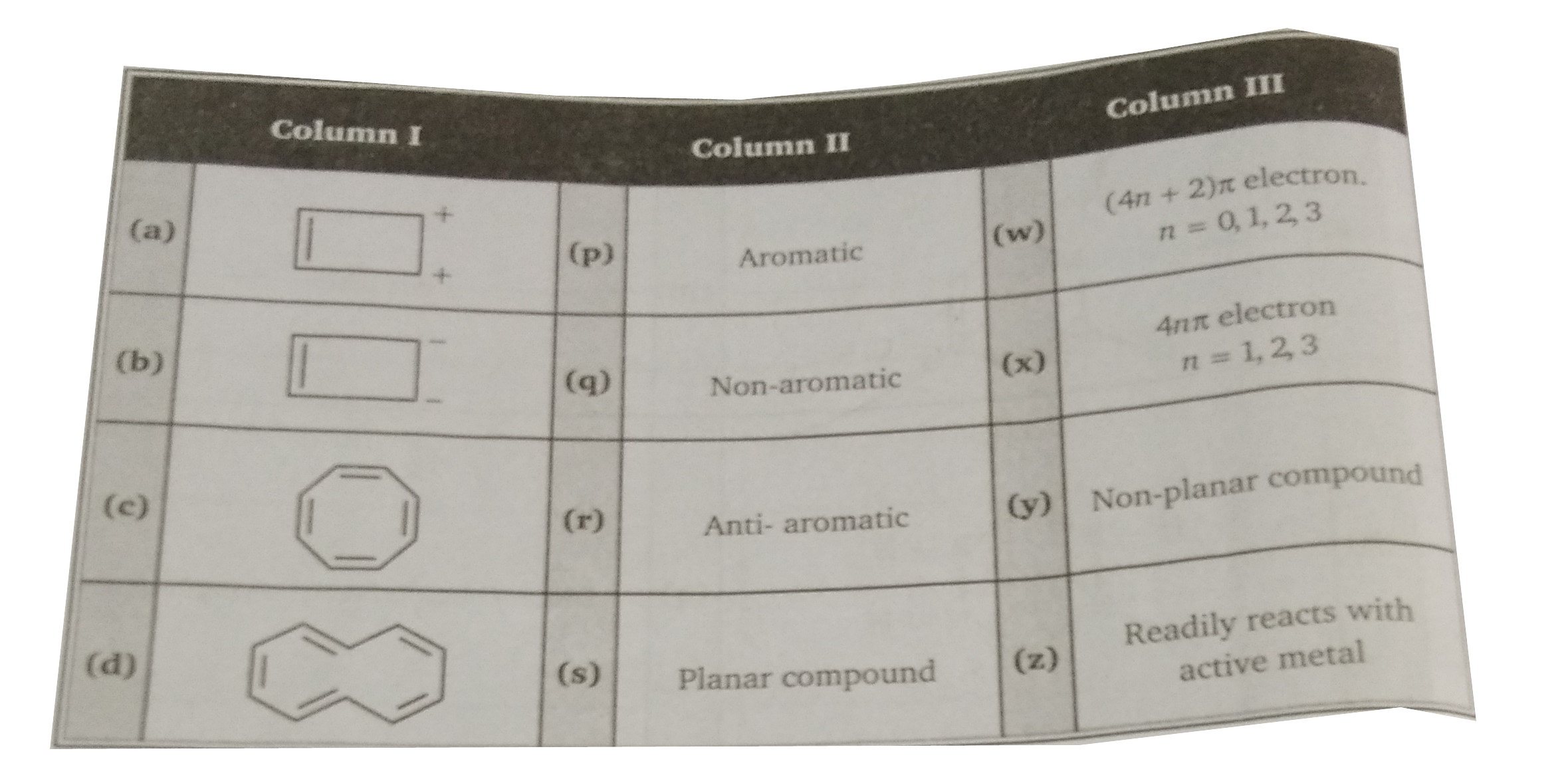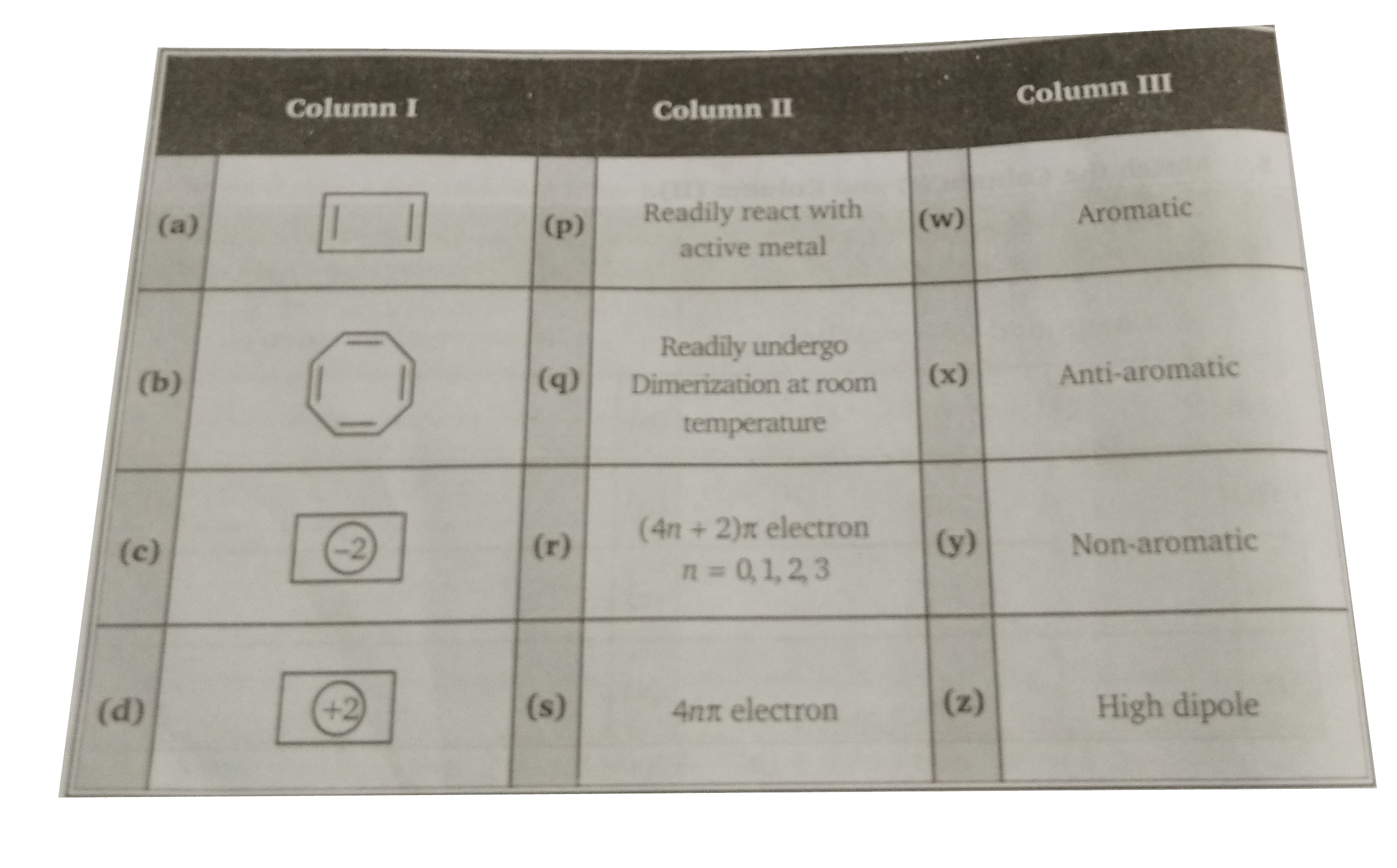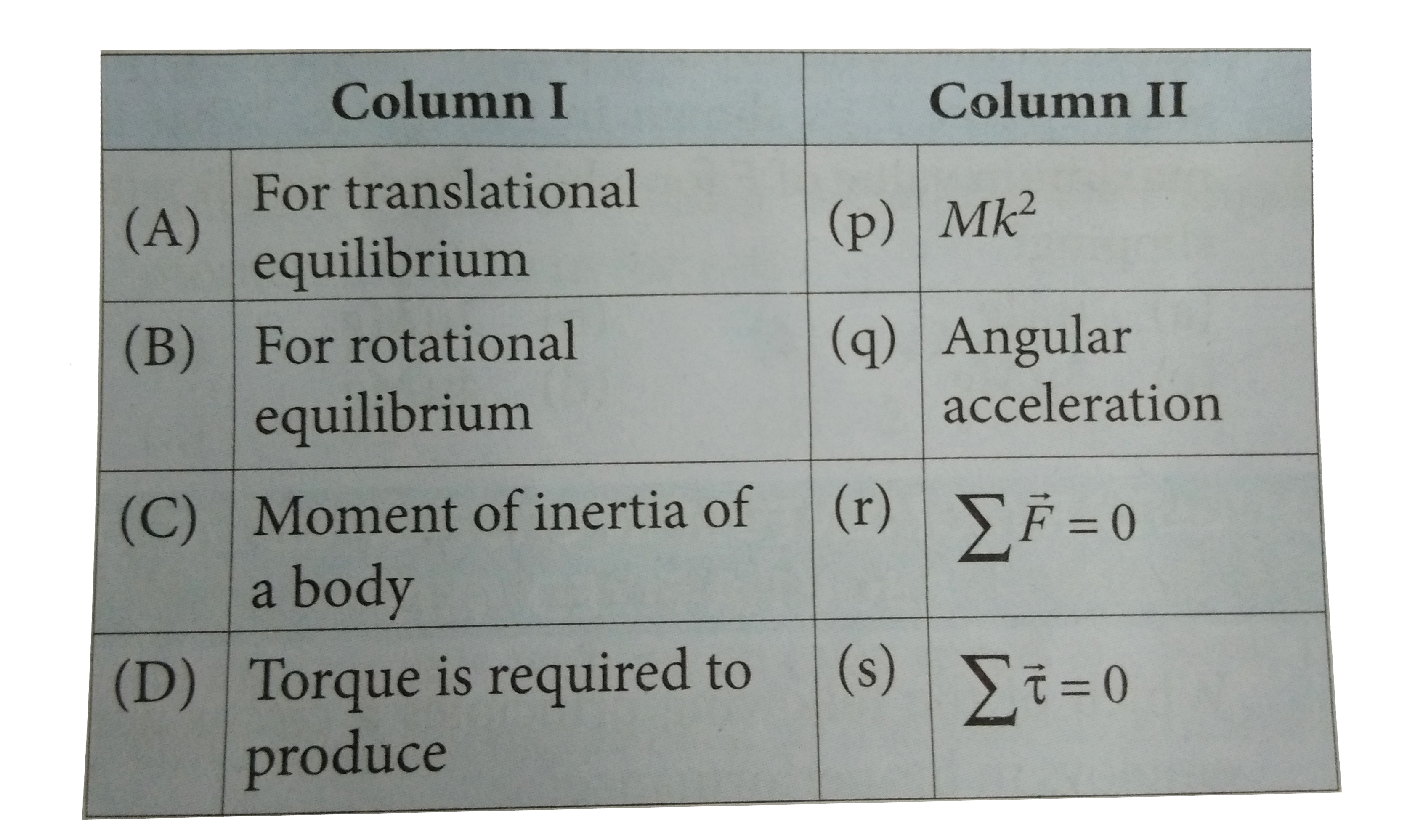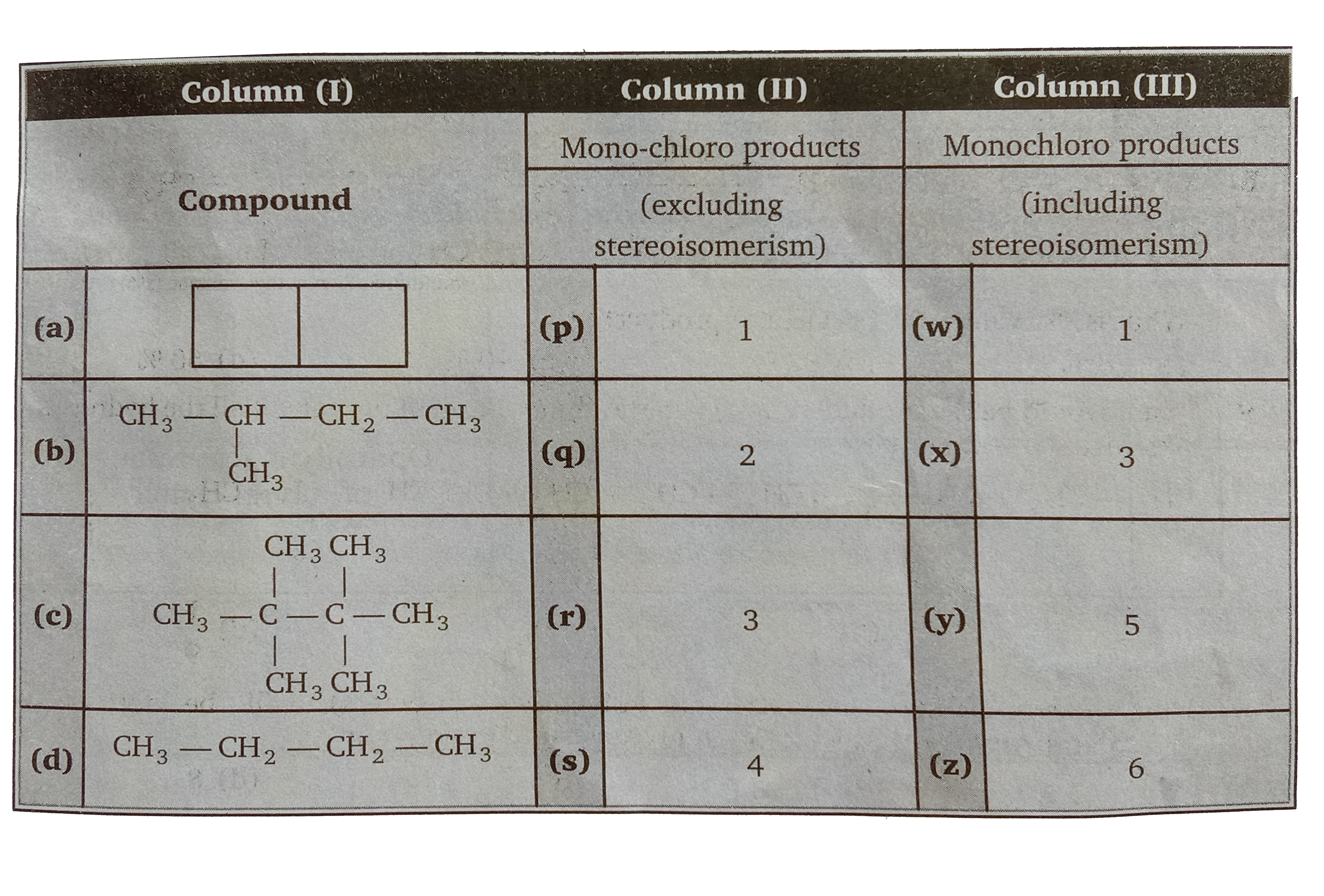The correct match of column I with column II is: <br> Column I (impure metals) a. Si, Ge b. Hg, Cd c. Cu, Ag d. Pb, Sn. Column II (refining process) (i) electrorefining, (ii) Zone refining, (iii) Liquation, (iv) Distillation
a(ii), b(iv), c(iii), d(i)
a(ii), b(iv), c(i), d(iii)
a(iv), b(ii), c(i), d(iii)
a(iv), b(ii), c(iii), d(i)
To solve the problem of matching the impure metals in Column I with their corresponding refining processes in Column II, we will analyze each metal and its appropriate refining method step by step.
1. Identify the Metals in Column I:
- a. Si, Ge (Silicon, Germanium)
- b. Hg, Cd (Mercury, Cadmium)
- c. Cu, Ag (Copper, Silver)
- d. Pb, Sn (Lead, Tin)
2. Identify the Refining Processes in Column II:
- (i) Electrorefining
- (ii) Zone refining
- (iii) Liquation
- (iv) Distillation
3. Match Each Metal with the Correct Refining Process:
- For Si, Ge (a):
- Silicon and Germanium are typically refined using Zone refining (ii). This method is effective for semiconductors where impurities are more soluble in the molten state than in the solid state.
- For Hg, Cd (b):
- Mercury and Cadmium can be purified through Distillation (iv), as they have relatively low boiling points which allow them to be separated from impurities through this method.
- For Cu, Ag (c):
- Copper and Silver are commonly refined using Electrorefining (i). In this process, an impure metal is used as an anode, and pure metal is deposited at the cathode.
- For Pb, Sn (d):
- Lead and Tin are purified using Liquation (iii). This method is suitable for low melting point metals, allowing them to flow away from higher melting impurities.
4. Final Matching:
- a. Si, Ge → (ii) Zone refining
- b. Hg, Cd → (iv) Distillation
- c. Cu, Ag → (i) Electrorefining
- d. Pb, Sn → (iii) Liquation
Conclusion:
The correct matches are:
- a → (ii)
- b → (iv)
- c → (i)
- d → (iii)
- a. Si, Ge (Silicon, Germanium)
- b. Hg, Cd (Mercury, Cadmium)
- c. Cu, Ag (Copper, Silver)
- d. Pb, Sn (Lead, Tin)
- (i) Electrorefining
- (ii) Zone refining
- (iii) Liquation
- (iv) Distillation
- For Si, Ge (a):
- Silicon and Germanium are typically refined using Zone refining (ii). This method is effective for semiconductors where impurities are more soluble in the molten state than in the solid state.
- For Hg, Cd (b):
- Mercury and Cadmium can be purified through Distillation (iv), as they have relatively low boiling points which allow them to be separated from impurities through this method.
- For Cu, Ag (c):
- Copper and Silver are commonly refined using Electrorefining (i). In this process, an impure metal is used as an anode, and pure metal is deposited at the cathode.
- For Pb, Sn (d):
- Lead and Tin are purified using Liquation (iii). This method is suitable for low melting point metals, allowing them to flow away from higher melting impurities.
- a. Si, Ge → (ii) Zone refining
- b. Hg, Cd → (iv) Distillation
- c. Cu, Ag → (i) Electrorefining
- d. Pb, Sn → (iii) Liquation
The correct matches are:
- a → (ii)
- b → (iv)
- c → (i)
- d → (iii)
Topper's Solved these Questions
Similar Questions
Knowledge Check
Correct match column -I with column-II :

 AA-(vii),B-(v),C-(iii),D-(i),E-(iv),F-(iv),G-(ii)BA-(vii),B-(iv),C-(iii) ,D-(i),E-(vi),F-(v),G-(ii)CA-(vi),B-(iv),C-(iii),D-(v),E-(vii),F-(i),G-(ii)DA-(i),B-(ii),C-(iii),D-(iv),E-(v),F-(vi),G-(vii)
AA-(vii),B-(v),C-(iii),D-(i),E-(iv),F-(iv),G-(ii)BA-(vii),B-(iv),C-(iii) ,D-(i),E-(vi),F-(v),G-(ii)CA-(vi),B-(iv),C-(iii),D-(v),E-(vii),F-(i),G-(ii)DA-(i),B-(ii),C-(iii),D-(iv),E-(v),F-(vi),G-(vii)Match the Column I with II Column II
AA B C D1 2 3 4BA B C D3 1 2 4CA B C D4 1 2 3DA B C D4 3 2 1Match the column I with Column II and Column III ltbvrgt
 AA−V,1lB−II,2,C−II,4,D−I,5,E−IV,3BA−V,1,B−II,4,C−I,2,D−III,3,E−IV,5CA−I,5,B−II,4,C−III,3,D−IV,2,W−V,1DA−V,5,B−II,4,C−I,3,D−III,2,E−IV,1
AA−V,1lB−II,2,C−II,4,D−I,5,E−IV,3BA−V,1,B−II,4,C−I,2,D−III,3,E−IV,5CA−I,5,B−II,4,C−III,3,D−IV,2,W−V,1DA−V,5,B−II,4,C−I,3,D−III,2,E−IV,1
Match the column (I), column (II) and column (III).(Matrix)

View SolutionMatch the column (I), Column (II) and Column (III) . (Matrix)

View SolutionMatch the metal in Column I with the ores in Column II

View SolutionThe correct match of term of Column-I with that of Column-II is

View SolutionMatch the Column I and Column II.,B

View Solution


